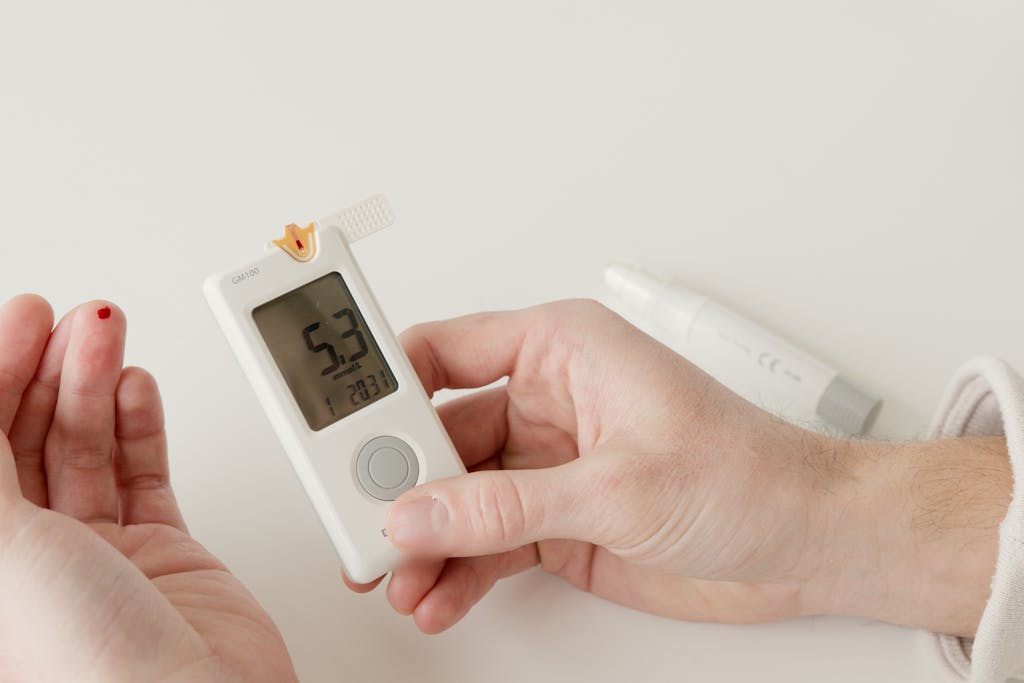Health
How to Monitor Blood Sugar Levels Effectively

Monitoring blood sugar levels is crucial for people with diabetes or those at risk of developing it. Keeping track of your blood sugar helps you manage your health and avoid complications. By following a few simple steps, you can effectively monitor your blood sugar and keep it within a healthy range.
Understand Your Target Range
The first step to effective blood sugar monitoring is knowing your target range. Your doctor will give you specific numbers to aim for, depending on your age, health condition, and whether you have diabetes. It’s important to understand what is considered normal for you, as individual targets can vary.
Use a Blood Sugar Meter
One of the most common and reliable ways to monitor blood sugar is by using a blood glucose meter. These devices measure the amount of sugar in your blood through a small drop of blood taken from your fingertip. It’s essential to follow the meter’s instructions carefully to ensure accurate results. You should also clean the device and store it properly.
Keep Track of Results
Recording your blood sugar readings is a vital part of effective monitoring. By keeping track of your results, you can identify patterns and see how certain foods, exercise, or medications affect your levels. Many meters come with apps or logs where you can store your data for easier tracking.
Test at the Right Times
For the most accurate picture of your blood sugar levels, it’s important to test at the right times. The best times to check your blood sugar are before meals, two hours after meals, and before bed. You may also need to check your blood sugar after exercise or if you feel unwell.
Watch for Symptoms of High or Low Blood Sugar
Even if you are monitoring regularly, it’s also important to be aware of symptoms of high or low blood sugar. If your blood sugar gets too high (hyperglycemia), you might feel thirsty, tired, or have blurry vision. Low blood sugar (hypoglycemia) can cause shaking, dizziness, or confusion. Knowing these signs helps you take quick action if needed.
Consult Your Doctor Regularly
Although home monitoring is important, it’s essential to consult with your healthcare provider regularly. They can help you adjust your monitoring routine or treatment plan as needed. Your doctor can also offer advice on how to better manage your blood sugar and prevent complications.
Use Continuous Glucose Monitoring (CGM)
For people with diabetes, continuous glucose monitoring (CGM) systems are becoming increasingly popular. These devices are worn on the body and provide real-time blood sugar readings throughout the day and night, helping you manage your condition more closely. While more expensive, CGMs provide convenience and continuous data.
Monitoring your blood sugar is a key part of managing your health, especially if you have diabetes. By understanding your target range, using the right tools, and tracking your results, you can take control of your blood sugar levels and make informed decisions about your health.
-

 Tech7 months ago
Tech7 months agoThe Best Lightweight Laptops for Travelers
-

 Tech7 months ago
Tech7 months agoHow to Extend the Lifespan of Your Electronics
-

 Finance7 months ago
Finance7 months agoTop Tips to Avoid Underinsurance for Your Home
-

 Senior7 months ago
Senior7 months agoTop Accessories to Enhance Your Electric Folding Wheelchair Experience
-

 Finance7 months ago
Finance7 months agoThe Best Business Credit Cards for Entrepreneurs
-

 Home & Lifestyle7 months ago
Home & Lifestyle7 months agoHow to Create a Spa-Like Bathroom at Home
-

 Home & Lifestyle7 months ago
Home & Lifestyle7 months agoSmall Kitchen Appliances That Make Cooking Easier
-

 Health7 months ago
Health7 months agoDiet Tips to Reduce Inflammation and Alleviate Knee Pain



